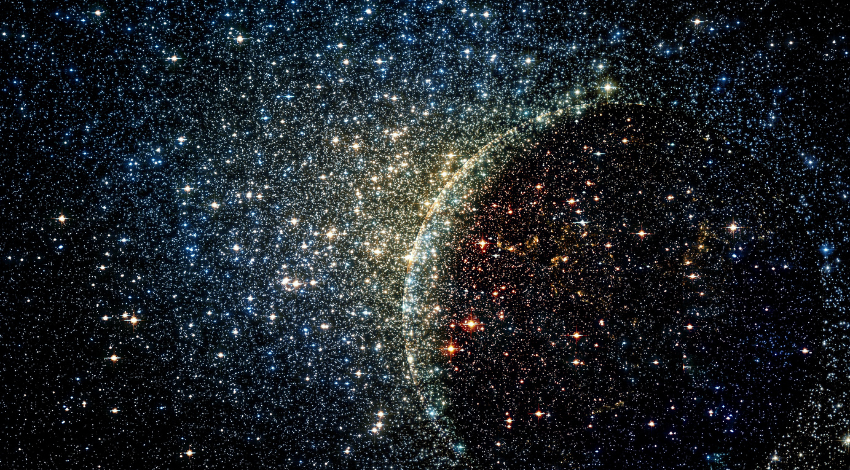An introduction to the cosmic microwave background astro8405 elective course

The Cosmic Microwave Background (CMB) is a faint glow of radiation that fills the universe, serving as a remnant of the Big Bang. Discovered accidentally in 1965, this microwave radiation provides a glimpse into the universe’s infancy, just 380,000 years after its birth. Often described as the “afterglow” of the Big Bang, the CMB is a critical piece of evidence supporting the Big Bang Theory, acting as a cosmic snapshot that has remained largely unchanged for billions of years.
The Discovery of the CMB
The CMB was first discovered by Arno Penzias and Robert Wilson in 1965, who were awarded the Nobel Prize in Physics for their work. While working on a radio antenna, they detected an unexpected noise that persisted no matter where they pointed their instrument. This noise, which turned out to be the CMB, provided the first direct evidence of the Big Bang and opened up a new era of cosmological research.
The Significance of the CMB in Modern Cosmology
The Role of the CMB in the Big Bang Theory
The CMB is often referred to as the “smoking gun” of the Big Bang Theory. It is the oldest light in the universe, providing direct evidence of the universe’s origins. The CMB’s uniformity and slight variations in temperature (known as anisotropies) have allowed scientists to confirm key aspects of the Big Bang Theory, such as the rate of expansion of the universe and the composition of its early matter.
The CMB as a Snapshot of the Early Universe
Imagine looking at a baby picture of the universe – that’s essentially what the CMB is. It shows the universe at a time when it was just 380,000 years old, still hot and dense, but cooling down enough for atoms to form. This “snapshot” allows cosmologists to study the conditions of the early universe, including the distribution of matter and energy, and how it has evolved into the universe we see today.
Why Study the CMB? Relevance in ASTRO8405
Studying the CMB is not just about understanding the past; it’s about unlocking the secrets of the universe. In the ASTRO8405 elective course, students delve into the study of the CMB to gain a comprehensive understanding of cosmology, astrophysics, and the fundamental forces that govern our universe. The course explores how CMB research influences other areas of astrophysics, making it a cornerstone for aspiring astrophysicists.
Properties of the Cosmic Microwave Background
The Temperature of the CMB
The CMB is incredibly cold, with a temperature of approximately 2.7 Kelvin, just above absolute zero. This uniform temperature is a key feature of the CMB, though slight variations, or anisotropies, exist and are crucial for understanding the universe’s structure and formation.
The Uniformity and Anisotropies of the CMB
While the CMB is largely uniform, tiny fluctuations in temperature, known as anisotropies, reveal a wealth of information about the universe’s early conditions. These anisotropies correspond to the seeds of galaxies and large-scale structures that formed later. Understanding these variations is a major focus of CMB research and a critical aspect of the ASTRO8405 course.
Polarization of the CMB
The CMB is also polarized, meaning that the light waves are aligned in certain directions. This polarization provides additional clues about the early universe, including information about the presence of gravitational waves and the influence of cosmic inflation. In ASTRO8405, students explore how polarization data is collected and analyzed to enhance our understanding of the cosmos.
Tools and Techniques for Studying the CMB
Satellite Missions (COBE, WMAP, Planck)
Several satellite missions have been launched to study the CMB in detail. The COBE (Cosmic Background Explorer) was the first to map the CMB, followed by WMAP (Wilkinson Microwave Anisotropy Probe) and Planck. These missions have provided increasingly detailed images of the CMB, allowing scientists to refine their models of the universe’s early moments. In ASTRO8405, students learn about the technology behind these missions and how their data has revolutionized cosmology.
Ground-Based Observations
While satellites have provided invaluable data, ground-based observations also play a critical role in CMB research. Instruments located at high-altitude sites, such as the Atacama Desert in Chile, observe the CMB with minimal atmospheric interference. These ground-based observatories complement satellite data and offer additional insights into the CMB’s properties.
Data Analysis Techniques in ASTRO8405
In ASTRO8405, students are introduced to the data analysis techniques used in CMB research. This includes statistical methods for analyzing anisotropies, polarization patterns, and other features of the CMB. Students also get hands-on experience with real CMB data, learning how to process and interpret it to draw meaningful conclusions about the universe.
Challenges and Controversies in CMB Research
Foreground Contaminations
One of the biggest challenges in studying the CMB is separating it from foreground contamination. These are signals from other sources, such as our galaxy’s dust, that can obscure the CMB. Advanced techniques and careful data analysis are required to remove these contaminants and obtain a clear picture of the CMB.
The Debate on CMB Anomalies
While the CMB is largely uniform, certain anomalies have puzzled scientists. These include unexpected patterns that don’t fit with the standard cosmological model. The debate over these anomalies continues, with some researchers suggesting they could point to new physics or even alternate models of the universe.
The Future of CMB Research: What Lies Ahead?
CMB research is far from over. Future missions and more sensitive instruments are planned to probe the CMB in even greater detail. These efforts aim to resolve existing mysteries, such as the nature of dark matter and dark energy, and to test new theories about the universe’s origin and evolution. ASTRO8405 students will be at the forefront of these developments, equipped with the knowledge and skills to contribute to this exciting field.
Application of CMB Studies in ASTRO8405
How CMB Research Informs Other Areas of Astrophysics
The study of the CMB is not just limited to understanding the early universe; it has far-reaching implications across astrophysics. For example, CMB data helps refine models of galaxy formation, the distribution of dark matter, and the nature of dark energy. In ASTRO8405, students explore these connections, learning how CMB research intersects with other areas of astrophysical study.
Hands-On Projects and Research Opportunities in ASTRO8405
ASTRO8405 offers students the opportunity to engage in hands-on projects that involve analyzing CMB data and contributing to ongoing research. Whether it’s through simulations, data analysis, or even participation in observational campaigns, students gain practical experience that prepares them for careers in astrophysics and cosmology.
Conclusion
The Importance of the CMB in Understanding the Universe
The Cosmic Microwave Background is more than just a relic of the Big Bang; it’s a crucial tool for understanding the universe. By studying the CMB, scientists can uncover the mysteries of the universe’s origin, structure, and ultimate fate. The ASTRO8405 elective course offers students a deep dive into this fascinating field, equipping them with the knowledge and skills to pursue a career in cosmology.
Why ASTRO8405 is an Essential Course for Aspiring Astrophysicists
For anyone interested in the cosmos, ASTRO8405 is an essential course. It provides a comprehensive understanding of the CMB, its significance in cosmology, and the tools and techniques used to study it. Through hands-on experience and in-depth study, students will be well-prepared to contribute to the exciting field of astrophysics.
FAQs
- What is the Cosmic Microwave Background?
The Cosmic Microwave Background (CMB) is the leftover radiation from the Big Bang, providing a snapshot of the early universe. - How was the CMB discovered?
The CMB was discovered by Arno Penzias and Robert Wilson in 1965, who detected it accidentally while working with a radio antenna. - Why is the CMB crucial to the Big Bang Theory?
The CMB is direct evidence of the Big Bang, supporting key aspects of the theory, such as the universe’s expansion and its early composition. - What are the main challenges in studying the CMB?
Challenges include separating the CMB from foreground contamination and resolving anomalies that don’t fit the standard model. - How does ASTRO8405 cover CMB research?
ASTRO8405 provides a comprehensive study of the CMB, including its properties, significance, and the tools and techniques used to analyze it.




